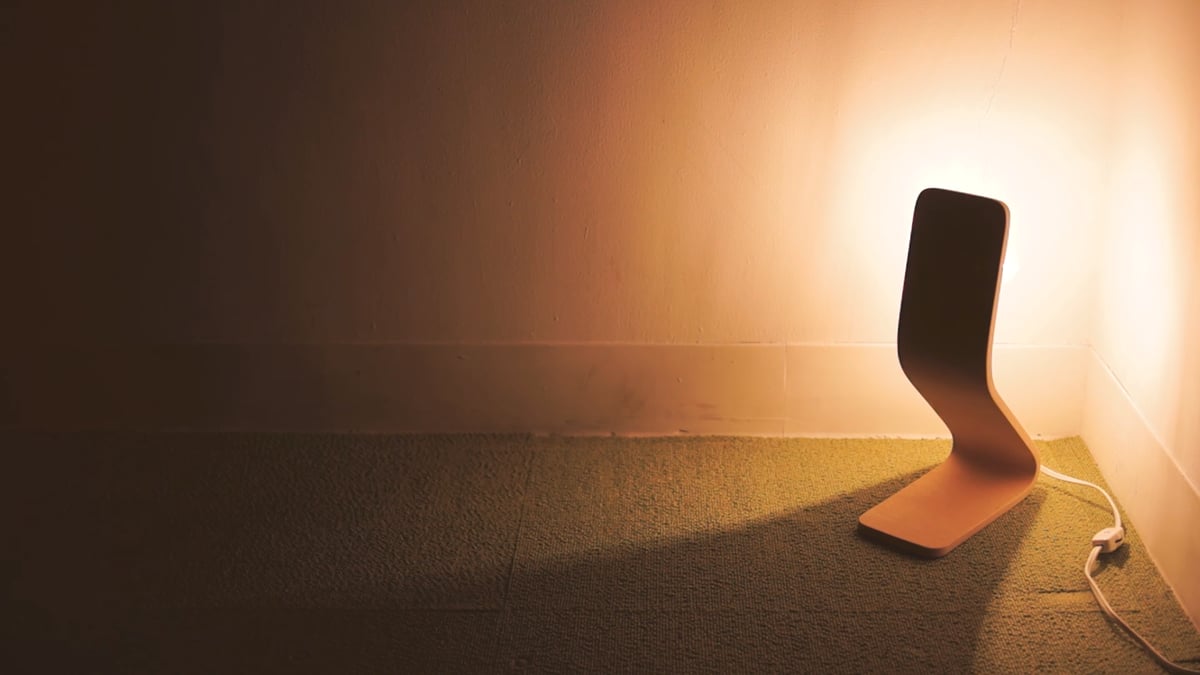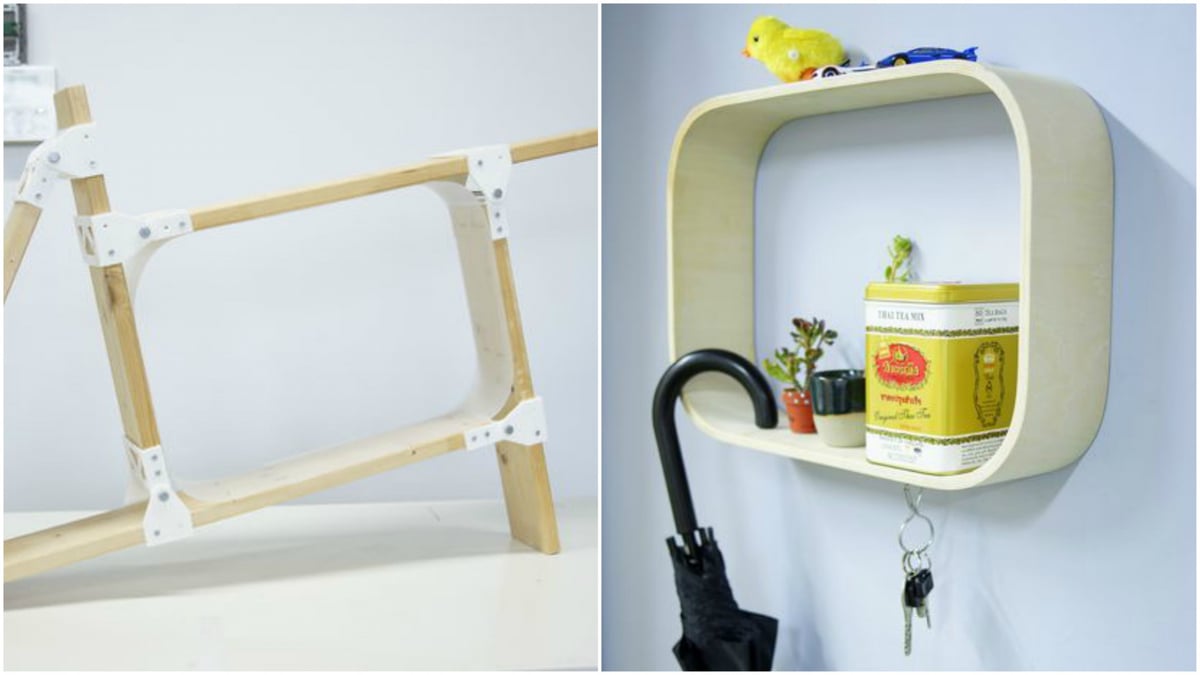Ryo Kosaka, a maker and student at Kyoto Institute of Technology, develops a method of bending plywood using 3D printed joints and SPF boards.
As a woodworking technique, bending plywood can make for unique designs that are both strong and beautiful. The only problem is it’s not exactly easy…
The typical procedure requires pressing sheets of plywood between two halves of a mold. And making that mold usually requires noisy tools that take up a lot of space.
Now, thanks to Ryo Kosaka, a maker and student at Kyoto Institute of Technology, there’s a quieter, more conservative way. In place of molds, he uses a frame made of 1 x 4 SPF beams and 3D printed joints.
The frame is the equivalent of the “containing” mold half. Acting as the other half, the one that applies pressure to the plywood, is an inflated rubber ball.
Determining the shape of the final product is a matter of adjusting the frame. And thanks to Kosaka’s pivoting joints, doing so is easy! Screws fasten two beams to a joint and a bolt holds the angle between them.
Another really cool feature of Kosaka’s jig is that you can add as many bends to a piece of plywood as you want! Just extend the frame with more beams and more joints!

How to Create and Use a Plywood Bending Jig
In order to test his concept, Kosaka’s first project was an angled lamp base. Its shape incorporated two bends, which required three beams with three joints.
The first step was to design the lamp. The resulting sketches dictated the structure of the frame.
Of course, simply fastening two beams together says nothing as to the actual curve the final plywood piece will take. For that, Kosaka set a flexible polypropylene sheet between two beams, guiding the radius of the curve.
Kosaka then lay several sheets of plywood, painted with glue, inside the frame. Finally, in order to press the plywood against the SPF beams, he inserted an inflatable rubber ball inside the entire contraption and pumped it up.
The final product, following some post-processing, was nearly flawless — a solid result for a first trail. Since then, Kosaka has experimented with a few other designs, including a curved rectangular shelf.
Sources: Instructables

License: The text of "Kyoto Student 3D Prints a Plywood Bending Jig" by All3DP is licensed under a Creative Commons Attribution 4.0 International License.